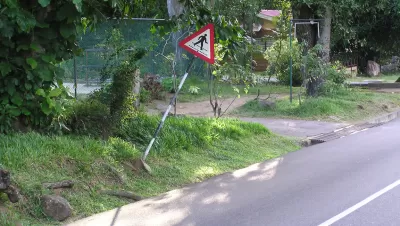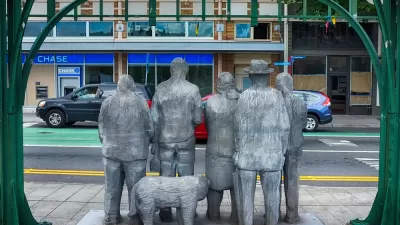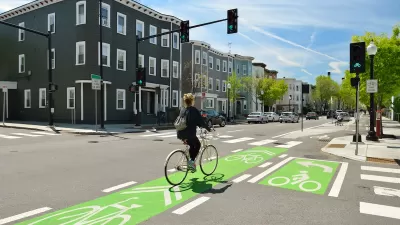Though the quick expansion of complete streets policies is worth celebrating, minority and low-income communities are still being left behind, and killed at a disproportionate rate.

Leah Binkovitz provides coverage of the recently released "Best Complete Streets Policies 2016" [pdf] report, recently released by Smart Growth America.
Previous coverage focuses mostly on the winners of the "best" title and the quick growth of complete streets policies around the country, but Binkovitz chooses a different frame through which to consider the findings of the study: equity.
Across the country, the annual report from Smart Growth America that documents and evaluates Complete Streets policies passed within the last year, found that Complete Streets efforts tended to concentrate in whiter localities. Massachusetts and Washington state alone accounted for 65 percent of all the policies included in the analysis. The report also found that the jurisdictions passing these policies tended to be wealthier. “The median income of communities that passed or updated a policy in 2016 was $59,347,” the report reads, “about 10 percent above the national average of $53,889.”
The other side of this equity coin is the tendency of pedestrian fatalities to occur in low-income communities, and people of color are more likely to be killed by drivers.
Binkovitz also notes that the city of Houston is one of the U.S. cities to add a complete streets policy in recent years, with mixed results in project delivery and increasing fatalities among pedestrians and bicyclists.
FULL STORY: COMPLETE STREETS POLICIES WERE CONCENTRATED IN WHITER, WEALTHIER AREAS IN 2016, ACCORDING TO NEW REPORT

Study: Maui’s Plan to Convert Vacation Rentals to Long-Term Housing Could Cause Nearly $1 Billion Economic Loss
The plan would reduce visitor accommodation by 25,% resulting in 1,900 jobs lost.

North Texas Transit Leaders Tout Benefits of TOD for Growing Region
At a summit focused on transit-oriented development, policymakers discussed how North Texas’ expanded light rail system can serve as a tool for economic growth.

Why Should We Subsidize Public Transportation?
Many public transit agencies face financial stress due to rising costs, declining fare revenue, and declining subsidies. Transit advocates must provide a strong business case for increasing public transit funding.

How to Make US Trains Faster
Changes to boarding platforms and a switch to electric trains could improve U.S. passenger rail service without the added cost of high-speed rail.

Columbia’s Revitalized ‘Loop’ Is a Hub for Local Entrepreneurs
A focus on small businesses is helping a commercial corridor in Columbia, Missouri thrive.

Invasive Insect Threatens Minnesota’s Ash Forests
The Emerald Ash Borer is a rapidly spreading invasive pest threatening Minnesota’s ash trees, and homeowners are encouraged to plant diverse replacement species, avoid moving ash firewood, and monitor for signs of infestation.
Urban Design for Planners 1: Software Tools
This six-course series explores essential urban design concepts using open source software and equips planners with the tools they need to participate fully in the urban design process.
Planning for Universal Design
Learn the tools for implementing Universal Design in planning regulations.
City of Santa Clarita
Ascent Environmental
Institute for Housing and Urban Development Studies (IHS)
City of Grandview
Harvard GSD Executive Education
Toledo-Lucas County Plan Commissions
Salt Lake City
NYU Wagner Graduate School of Public Service




























